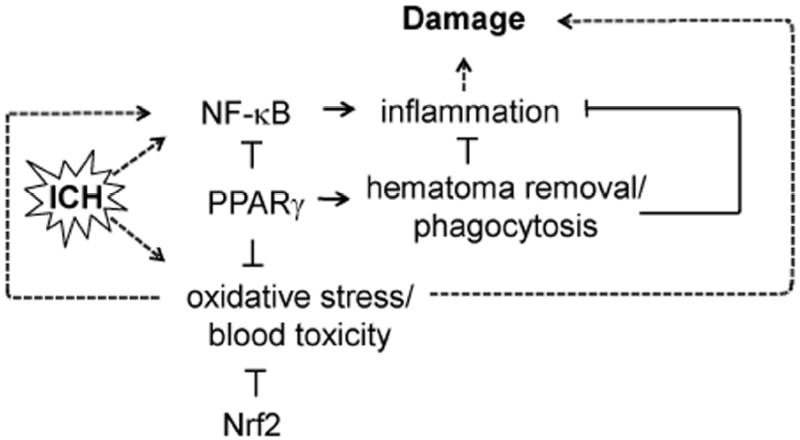Fig 2.

Intracerebral hemorrhage activates transcription factor NF-κB., which then perpetuates inflammation that along with oxidative stress leads to secondary brain damage. Transcription factors PPARγ via inhibition of NF-κB and induction of anti-oxidative defense components reduces inflammation and oxidative stress and protects ICH-affected brain. Transcription factor Nrf2 acts as an effective regulator of oxidative stress and blood detoxification components. In addition, PPARγ stimulates phagocytosis-mediated hematoma cleanup, thus facilitating removal of hematoma, the source of toxicity and inflammation.
